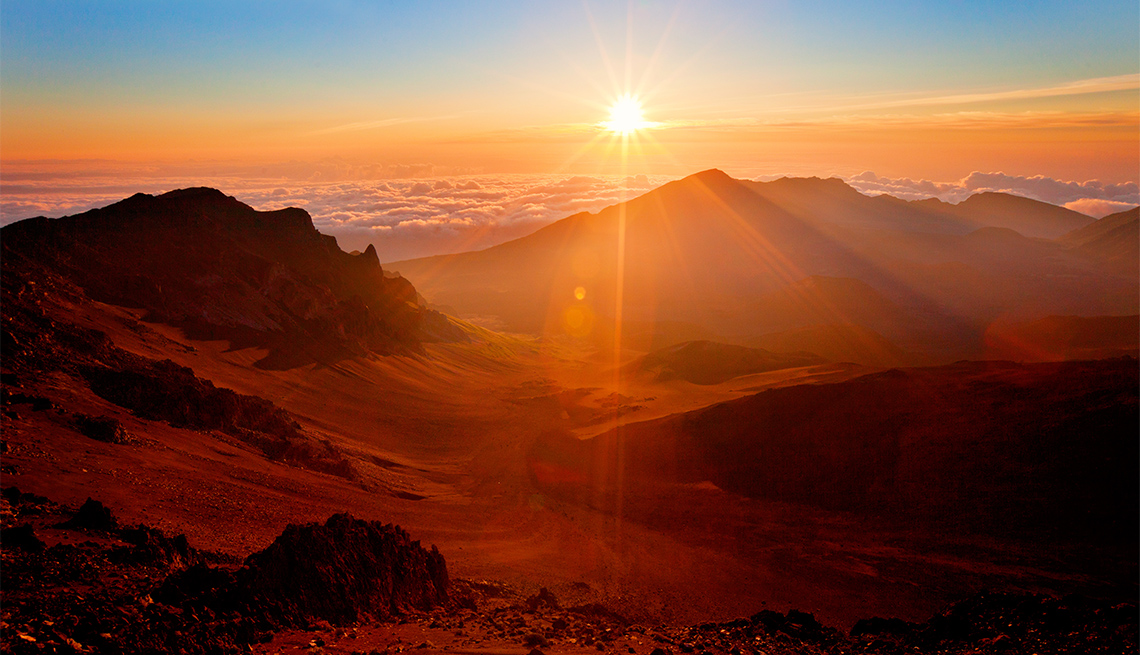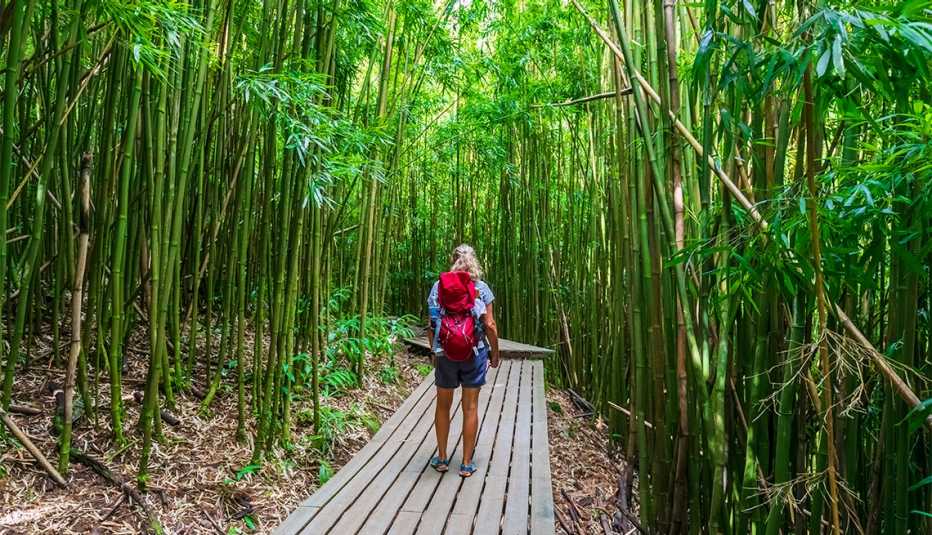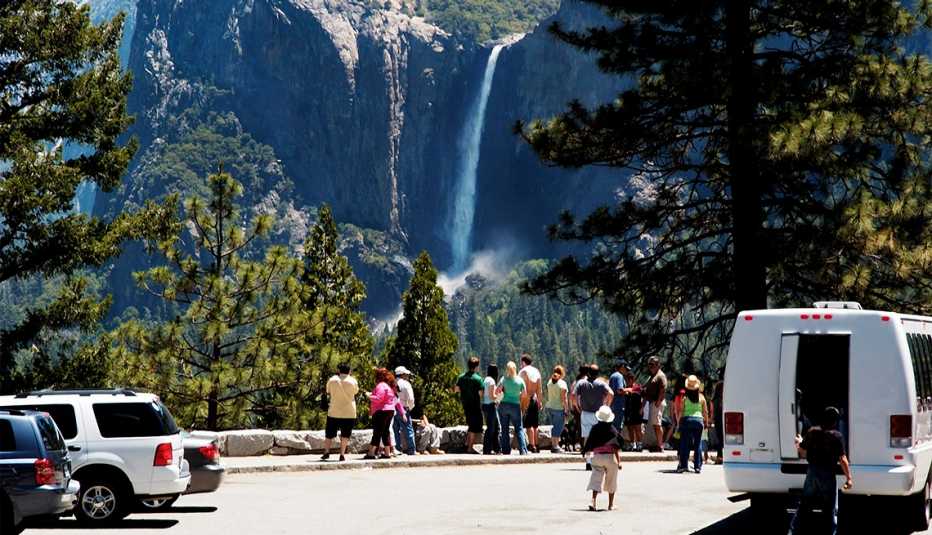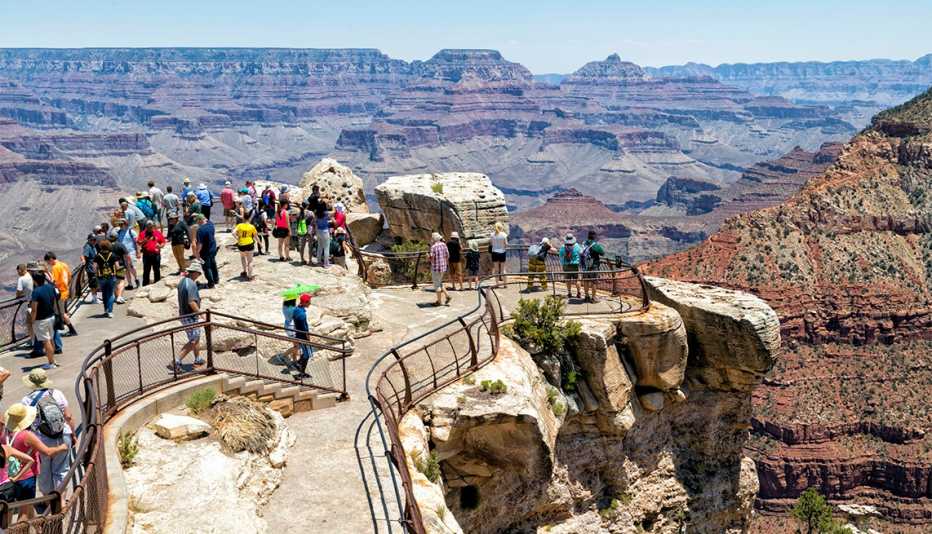AARP Hearing Center
Two or three hours from the luaus and swim-up bars at Maui’s beachside resorts, one of the world’s largest dormant volcanoes looms 10,023 feet above the island’s crashing cobalt surf. Welcome to Haleakalā National Park (HNP), a 30,183-acre tract of rugged Hawaiian upcountry.
Native Hawaiian legend has it that Haleakalā, designated as a national park in 1961, was conceived when the demigod Maui captured the sun with his coconut-fiber lasso for his mother, the moon goddess Hina. As a result of its imprisonment, the sun promised to move more slowly across the sky, producing more daylight for Hina to dry her kapa-bark clothing. To honor this pact, Hawaiians named the majestic volcano Haleakalā, or “House of the Sun.”

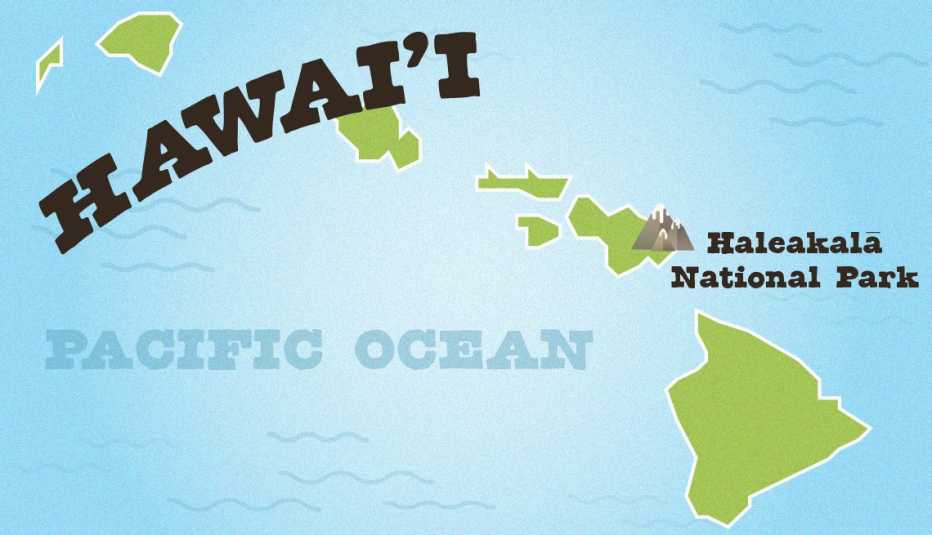
Facts
Park location: Hawaiian island of Maui
Highest peak: Puʻuʻulaʻula Point, at 10,023 feet above sea level
Lowest valley: Sea level, at the Pacific Ocean in the Kīpahulu District
Miles of trails: Nearly 40
Main attraction: Haleakalā Crater, in the Summit District
Cost: $30 per vehicle entrance fee ($20 with the annual Senior Pass), valid for three consecutive days
Best way to see it: Driving by car to the summit and hiking its many trails
When to go: Year-round
Haleakalā’s growth began some 2 million years ago, and the volcano has erupted at least 10 times in the past millennia, most recently between the years 1480 and 1600. Although it’s not expected to awake anytime soon, east Maui’s long history suggests it could erupt again. “The summit of Haleakalā once reached 15,000 feet above sea level,” says Jin Prugsawan Harlow, HNP’s chief of interpretation, education and volunteers. “Haleakalā is so heavy that it began to sink into the crust of the Earth.” (Fun fact: Haleakalā rises more than 29,000 feet from seafloor to summit, making it taller than Mount Everest.)
Today, HNP’s heavenly landscape, which forms Maui’s eastern rampart, stretches from its above-the-clouds volcanic peak to the craggy Pacific coastline. Two dramatically distinct sections form the park: the Summit District, a rolling red desert of cinder cones and volcanic ash, and the Kīpahulu District, a seaside rain forest valley of waterfalls, pooling streams and bamboo woodlands. HNP is also home to 103 endangered species, including the nēnē goose — Hawaii’s state bird — and the Haleakalā silversword plant.
The park’s otherworldly allure has gobsmacked some of America’s finest wordsmiths, too. Mark Twain, during his 1866 voyage through the Hawaiian Islands, called Haleakalā’s sunrise “the sublimest spectacle I ever witnessed, and I think the memory of it will remain with me always.” Decades later, in 1907, famed novelist and adventurer Jack London horse-packed through the terrain, rendering it “a workshop of nature still cluttered with the raw beginnings of world-making.”
The Summit District’s Haleakalā Crater (technically, it’s an “erosional depression”) lures the bulk of HNP’s 1.2 million annual visitors. There you can access most of the park’s best viewpoints and outdoor activities in one day: sunrise and sunset viewing, bird-watching, stargazing and hiking along its more than 30 miles of trails. Named “the quietest place on Earth” by acoustic experts, HNP delivers record-book quietude, too, especially on a walk beneath the volcano’s rim.


Plan Your Trip
Any time of year is a great time to visit HNP. From the mainland or another Hawaiian island, fly to Kahului Airport in central Maui, then take highways 37, 377 and 378 to the park. The 38-mile drive to the summit, an ear-popping ascent, takes roughly two hours.
Maui’s tropical weather all but disappears in the Summit District, where conditions are quick to change, delivering an unpredictable pattern of sunshine, rain and chilling winds. Temperatures range between 30 and 80 degrees Fahrenheit. Be sure to pack extra warm clothes for sunrise — a down jacket, gloves and a winter hat. For hiking one of the trails, bring raingear, plenty of water, sturdy hiking shoes and sunscreen.
You’ll find two visitor centers in the Summit District: Headquarters Visitor Center, one mile past the park entrance at 7,000 feet, and Haleakalā Visitor Center at 9,740 feet, 30 minutes farther up the mountain. At both, you can buy books and souvenirs, see cultural displays and ask park rangers questions.
The Kīpahulu District, currently open from 9 a.m. to 5 p.m., is 12 miles past the town of Hāna, accessed via the scenic Hāna Highway (Highway 36), which hugs Maui’s northeast coast. From the airport, allow up to 3 1/2 hours to get there (the 62-mile drive is narrow and slick, with plenty of waterfalls and photo ops along the way). Weather-wise, you’re back at the beach, so plan for both hot and rainy coastal weather. The Kīpahulu Visitor Center is open from 9 a.m. to 4 p.m.































































